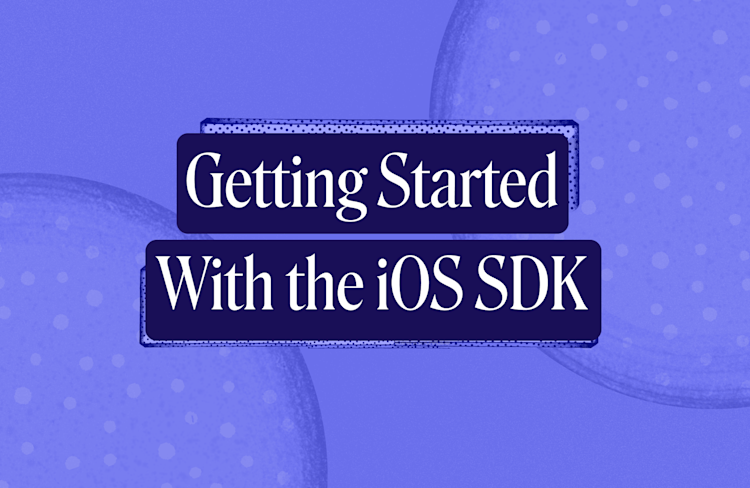Whereby Browser SDK V2 With React Hooks Now in Public Beta
With our Browser SDK v2 with React hooks, developers can seamlessly integrate video calling into their applications, while keeping full control over the UI.

Today, we are thrilled to announce the public Beta release of Whereby browser SDK version 2 with React hooks. This update enables developers to easily incorporate Whereby-powered video calling into their applications. With full control over the user interface and no need for prior knowledge of video conferencing technologies, developers can seamlessly integrate video calling, enhancing their applications with powerful new real-time capabilities.
To get started with Whereby React hooks, install the beta version of the Browser SDK v2 from NPM and check out the tutorial.
If you’re interested in learning more about our Browser SDK, read on:
A bit of background: Whereby Embedded’s growth
Here at Whereby, we take pride in our products being chosen by customers for their simplicity and ease of use. For many years, Whereby Meetings, our browser-based video call solution, has been recognized by software review platforms as the easiest to use and most user-friendly standalone video conferencing application. We have extended this value to Whereby Embedded, which allows customers to automate the management of Whereby video calls using our API and webhooks, customize the functionality of the Whereby room using URL parameters, and easily embed the room within their own application using an iframe or a web component.
Whereby Embedded has become a popular choice among developers of web and mobile products where real-time video communication between two or more users is at the heart of the service, spanning a wide range of industries including telehealth, education, virtual events, remote collaboration, customer support, and more.
Evolving customer needs
As our customers’ products have grown, their needs and expectations have evolved as well. It has become increasingly clear that the customisation options for Whereby’s pre-built room experience, although useful for many scenarios, are not adequate to meet the demands of more complex use cases. And while the market already offers a variety of solutions for building all types of custom video calling integrations, their initial implementation is often cumbersome. Additionally, many of these solutions also come with scalability and maintenance challenges, especially for developers without prior experience in real-time communications.
That’s why we've made significant investments in the Whereby Browser SDK, a development environment that empowers builders to create fully customised real-time video experiences, all while preserving our distinctive qualities: ease of implementation and simplicity of maintenance.

The screenshot above shows an example interface created with the Whereby Browser SDK and React hooks. As you can see, it’s quite different from the typical Whereby Meetings interface.
Going the React hooks route
As React is one of the most popular and versatile technology stacks for building web applications, we have chosen to use React's hooks technology to build this functionality.
Whereby React hooks simplify the management of state and handling of events in real-time video apps, reducing complexity for developers. This allows them to focus on customizing the user interface and developing core product functionality, instead of spending time on media optimization, state synchronization, and event handling.
The React hooks provided by the Whereby Browser SDK are specifically designed for development teams building apps with React or React-compatible frameworks like Next.js, Vite, or Remix. However, please note that at this time, Whereby React hooks are not available for React Native apps just yet — stay tuned for more news about this in a future release.
Getting started
To get started with Whereby React hooks, you just need to install the beta version of the @whereby.com/browser-sdk library from npm in your React project. You can also run this in your console to install it directly: npm i @whereby.com/browser-sdk@2.0.0-beta3
Then, we highly recommend following our tutorial for Whereby React hooks or watching our YouTube tutorial. They will guide you step-by-step through the process of creating a fully functional application that connects 2 participants in a video call with screen sharing and chat functionalities.
Alternatively, you can inspect the development branch of our GitHub repository, which also contains some example apps. Or, you can go ahead and browse through the reference documentation to make yourself familiar with the functionality exposed by Whereby React hooks.
About this beta
Since the alpha release earlier this year, our main focus has been on fixing critical bugs in the video connection to make it more reliable. Additionally, we have incorporated highly requested features like screen sharing, chat messages and knocking. We are also putting the developer experience at the forefront of our service, so we made sure that this Beta release already works seamlessly with the most popular React-compatible frameworks.
At this point, we are confident that you can start integrating Whereby into your app with React hooks without critical issues that could disrupt your workflow or the experience of your users. We’re making this beta release of Whereby Browser SDK v2 available to all our customers, inviting you to provide feedback and help us identify and fix any remaining issues before we take away the beta label. Feel invited to report any issues that you’re facing or give suggestions for improvements directly in the GitHub repository. We also encourage you to join the Whereby Discord community, where you can share feedback, ask questions, and receive help from fellow Whereby developers.
Feedback welcome!
As always, we appreciate your engagement and eagerly anticipate working closely with you as we further enhance the Whereby Browser SDK with React hooks: the first choice for builders who want to create fully customised video conferencing experiences for their products and services without needless complexity.


